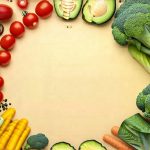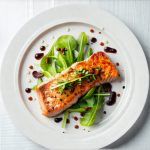Acid reflux and upper abdominal discomfort are incredibly common experiences, affecting millions worldwide. Often dismissed as merely ‘heartburn’, these symptoms can significantly impact quality of life, ranging from mildly irritating to debilitatingly painful. Understanding the interplay between what we eat and how it affects our digestive system is crucial for managing these issues. It’s not always about eliminating entire food groups; instead, a strategic approach to meal composition—the combination of foods in any given meal—can often make a substantial difference. This involves considering factors beyond just identifying trigger foods, such as portion sizes, eating speed, and the timing of meals relative to activity levels.
The goal isn’t restrictive dieting but rather informed choices that support optimal digestion and minimize irritation. Many individuals find relief simply by adjusting how they combine foods, rather than adhering to overly strict or limiting dietary plans. A proactive approach focusing on mindful eating and thoughtful meal planning can empower you to take control of your digestive health and reduce the frequency and severity of uncomfortable symptoms. This article will explore practical strategies for composing meals that help prevent acid reflux and upper abdominal discomfort, focusing on both food choices and eating habits.
Building Balanced Meals: The Foundation of Digestive Comfort
The core principle behind preventing acid reflux isn’t necessarily about avoiding specific foods entirely (though some individuals may have clear sensitivities). It’s more about creating balanced meals that don’t overwhelm the digestive system or exacerbate existing issues. A well-composed meal should ideally include a balance of macronutrients – carbohydrates, proteins, and fats – along with sufficient fiber. However, it’s the combinations that truly matter. For example, large amounts of fat coupled with high acidity can be problematic for some. Similarly, rapidly digesting carbohydrates paired with slow-digesting proteins can lead to fermentation in the gut, contributing to bloating and discomfort.
Think about layering your meals. Start with easily digestible components, then add more complex ones. This allows your body to process food incrementally rather than being hit with a large digestive load all at once. Prioritizing whole, unprocessed foods is almost always beneficial. These provide essential nutrients and fiber while minimizing additives and ingredients that can trigger symptoms. Hydration also plays a key role; drinking enough water throughout the day aids digestion and helps prevent constipation, which can indirectly contribute to reflux. hydration strategies are important for overall health.
Consider portion control as an integral part of meal composition. Overeating puts excessive pressure on the lower esophageal sphincter (LES), increasing the risk of acid escaping into the esophagus. Smaller, more frequent meals are often easier for the digestive system to handle than large infrequent ones. This is particularly true if you’re prone to reflux or discomfort after eating. Ultimately, a balanced and thoughtfully constructed meal sets the stage for comfortable digestion and minimizes the likelihood of unpleasant symptoms.
Food Timing & Meal Frequency
The timing of your meals relative to other activities—especially sleep and exercise—can significantly impact acid reflux. Eating too close to bedtime is a common trigger, as gravity isn’t working in your favor when you’re lying down. Aim to finish eating at least 2-3 hours before going to bed. This allows your stomach to empty partially, reducing the chance of acid creeping upwards during sleep. Similarly, intense exercise immediately after eating can also exacerbate reflux symptoms; allow some time for digestion before engaging in strenuous activity.
Meal frequency is another important consideration. As mentioned previously, smaller, more frequent meals often work better than large, infrequent ones. This helps maintain a consistent level of stomach acidity and prevents the overfilling that triggers reflux. Don’t let yourself get overly hungry, as this can also lead to rapid eating and larger portions. A schedule of 5-6 smaller meals throughout the day may be more manageable for your digestive system than three large meals. best meal timing can make a big difference.
Finally, pay attention to how you eat. Eating quickly or while stressed can disrupt digestion and increase the risk of reflux. Take your time, chew your food thoroughly, and create a relaxed eating environment. Mindful eating isn’t just about what you eat; it’s about how you approach the entire process.
Identifying Personal Trigger Foods
While general guidelines are helpful, everyone responds to foods differently. What triggers reflux in one person may not affect another. Keeping a food diary can be an invaluable tool for identifying your personal trigger foods. Record everything you eat and drink, along with any associated symptoms (heartburn, bloating, abdominal discomfort). Be specific about the timing of symptoms relative to meal consumption.
- Track both meals and snacks
- Note portion sizes
- Include details about how you felt before, during, and after eating
- Look for patterns over time
After a few weeks, review your diary to identify common culprits. Common triggers include: fatty foods, spicy foods, citrus fruits, tomatoes, chocolate, caffeine, alcohol, carbonated beverages, and mint. However, don’t automatically eliminate entire food groups without experimentation. Sometimes it’s not the food itself but the quantity or combination with other foods that causes problems.
Consider an elimination diet under the guidance of a healthcare professional if you suspect multiple sensitivities. This involves removing potential trigger foods from your diet for a period and then reintroducing them one at a time to observe any reactions. Remember, identifying personal triggers is an ongoing process, as sensitivities can change over time. gerd diet plan provides useful guidance here.
The Role of Fiber & Probiotics
Fiber plays a crucial role in digestive health and can help prevent acid reflux in several ways. Soluble fiber, found in foods like oats, apples, and beans, absorbs water, creating a softer stool that’s easier to pass, thus reducing constipation and pressure on the LES. Insoluble fiber, present in whole grains and vegetables, adds bulk to the stool, promoting regularity. A diet rich in both types of fiber supports healthy bowel movements and minimizes digestive discomfort. However, introducing too much fiber too quickly can actually worsen bloating, so increase your intake gradually.
Probiotics – beneficial bacteria that live in our gut – are increasingly recognized for their role in digestive health. They help maintain a balanced gut microbiome, which is essential for optimal digestion and immune function. A healthy gut microbiome can reduce inflammation and improve the efficiency of nutrient absorption. You can obtain probiotics through fermented foods like yogurt, kefir, sauerkraut, and kimchi, or through probiotic supplements (consult with your healthcare provider before taking any supplements).
The combination of fiber and probiotics creates a synergistic effect that promotes digestive regularity and overall gut health. This not only helps prevent constipation but also reduces the risk of acid reflux by supporting efficient digestion and minimizing pressure on the LES. Focus on incorporating both into your daily diet to support long-term digestive comfort. If you experience discomfort while traveling, consider comprehensive strategies to manage it. And remember that acid reflux can sometimes lead to other issues like hoarseness and sore throat.


















